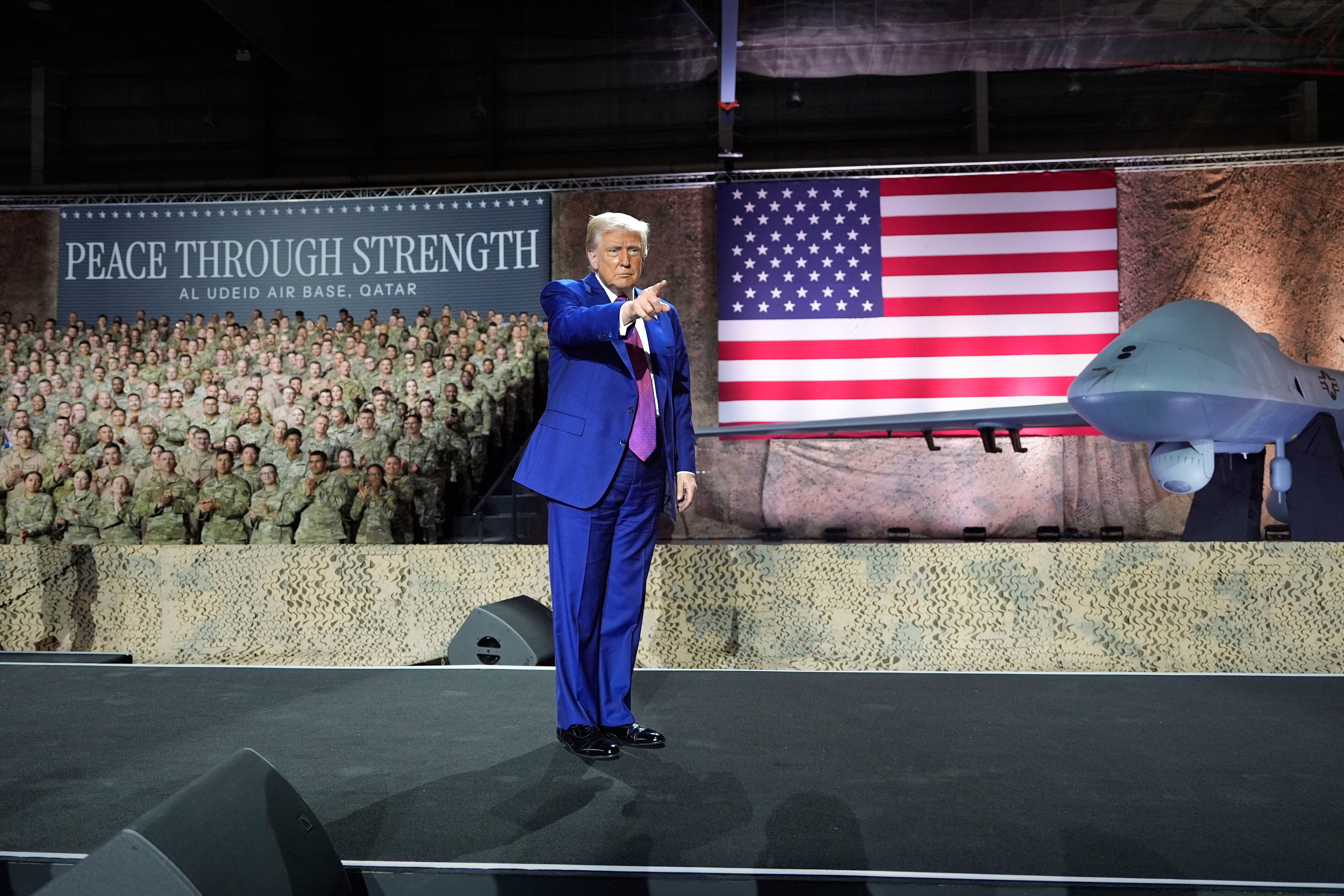The America may be going Down Under soon.
The Navy's newest amphibious assault ship will soon take the helm of an amphibious ready group and will in 2016 and likely and head to Australia in coming years the land down under as the sea services look to boost Pacific presence by rotating forces through .
Though the America Amphibious Ready Group, with its embarked Marine expeditionary unit, has not yet formally formed, the Navy's top officer said the amphibious assault ship America is athe "prime candidate" to lead the blue-green team to the Pacific, with an emphasis on Australia.
"They will go into the Darwin … and conduct on-load and off-load," Chief of Naval Operations Adm. JonathanGreenert, chief of naval operations, told Navy Times on March 24.
The group will include the ships and 2,000 Marines that comprise the Marine Expeditionary Unit.
The America isn't the only ship being considered for an Australia swing. This summer, amphibious assault ship Bonhomme Richard, amphibious transport dock Green Bay and dock landing ship Ashland are set to head there.
The San Diego-based America is one of the West Coast gator big decks that will be considered for a rotational deployment to Australia, for exercises with U.S. Marines and Australian forces.
"She's joining the other ARGs on the West Coast and Pacific that can operate in and around Australia and could potentially join those who can pull into Darwin during the nonrainy season," said CNO spokesman Capt. Danny Hernandez.
Darwin is the latest addition on a bucket list of plum destinations for The one-of-a-kind gator big deck, which left ports the America crew has had since leaving the Mississippi shipyard in July, has had a run of plum port calls 2014. The ship sailed around South America and stopped in Colombia, Brazil, Chile, and Peru on its way to California, where it was commissioned as part of San Francisco Fleet Week in October.
The Australia floats are to Australia is not a permanent basing, nor is it a "hot swap" in which the ship will stay on station as new crews come and go, an approach taken for the littoral combat ships that will be based in Singapore. Such is the approach taken with littoral combat ships based in Singapore.
Instead of cutting holes in the ocean, deployed Marines will get extra training in the remote Australian outback. The 31st Marine Expeditionary Unit was the first to take advantage of the opportunity when 750 Marines linked up with 150 Marines from Marine Rotational Force – Darwin and 100 Australian troops for Exercise Koolendong '13.
While the Marines do some ground-pounding, the ships will exercise and operate around the Southeast Asia region and Australia, Greenert said.
Darwin this summer.America is often called a mini-carrier because it lacks a well deck. Marines love the extra space this provides, which includes 19 more maintenance spaces that are 20 to 30 percent larger than normal. But the change means Marines are limited to air operations; heavy equipment is out, and small ground vehicles have to be offloaded at the pier or sling loaded from an aircraft. If the weather is bad, the Marines are stuck — and that has been a problem in previous trips to Australia.
"With the way the rainy season works, it is only good to operate around there about six months out of the year," Greenert said. "In fact, when we were in Australia, we chose the rainy period. We [now] know what they mean."
The rain is especially problematic in the Northern Territory, where Darwin is located. Much of the training center is underwater during the the monsoon season, which lasts from November to March.
Other ships can expect to follow in America's wake as the two nations beef up an already strong alliance. The Pentagon and the Australia Defence Force are studying a variety of options, Greenert In a Feb. 10 lecture on security at the Australian National University in Canberra, Greenert said the nations are "doing a study together to see what might be feasible for naval cooperation in and around Australia, which might include basing ships."
Aussies have a long-standing policy that there are no foreign military bases on Australian soil, so a Navy presence would likely be rotational crew swap on warships rather than permanent basing.
Another possibility is to base a U.S. carrier in Perth, on Australia's west coast, a recommendation from a 2012 Defense Department assessment. Congress in the 2012 National Defense Authorization Act directed the Defense Department to commission an independent assessment of U.S. force posture in Asia. The subsequent report, presented in August 2012 by the Center for Strategic and International Studies, recommended a carrier-based presence in Perth, on Australia's west coast.
The Australian naval base Stirling could host the massive carrier strike group, which includes the carrier, its air wing, two Aegis guided missile cruisers, a destroyer squadron with two to three guided missile destroyers, up to two attack submarines, and a combined ammunition, oiler and supply ship for logistic support.
"Forward basing U.S. assets such as a carrier group would be a force multiplier," the report said. "Basing (homeporting) a carrier in the Asia Pacific region is the rough equivalent of having three such assets versus one that only is deployed there, because of increased dwell time and usage."
The lack of ships needed to project an amphibious ready group drove the development of two land-based units: Special-Purpose Marine Air-Ground Task Force Crisis Response – Africa, a Spain-based unit that responds to emergencies in Africa, and Marine Rotational Force – Darwin, based in Australia. The first 200 Marines arrived in Darwin in April 2012.
MRF-Darwin now boasts a battalion landing team of 1,200 Marines, and will expand to a 2,500-man MAGTF by 20162020. This will include the increased rotation of U.S. military aircraft through facilities in northern Australia as well as the prepositioning of equipment and supplies. The addition of a three-ship ARG would be optimal, officials said, but the Darwin port requires expansion to host an amphibious assault ship and two dock landing ships.
and Gina Harkins contributed to this report.





